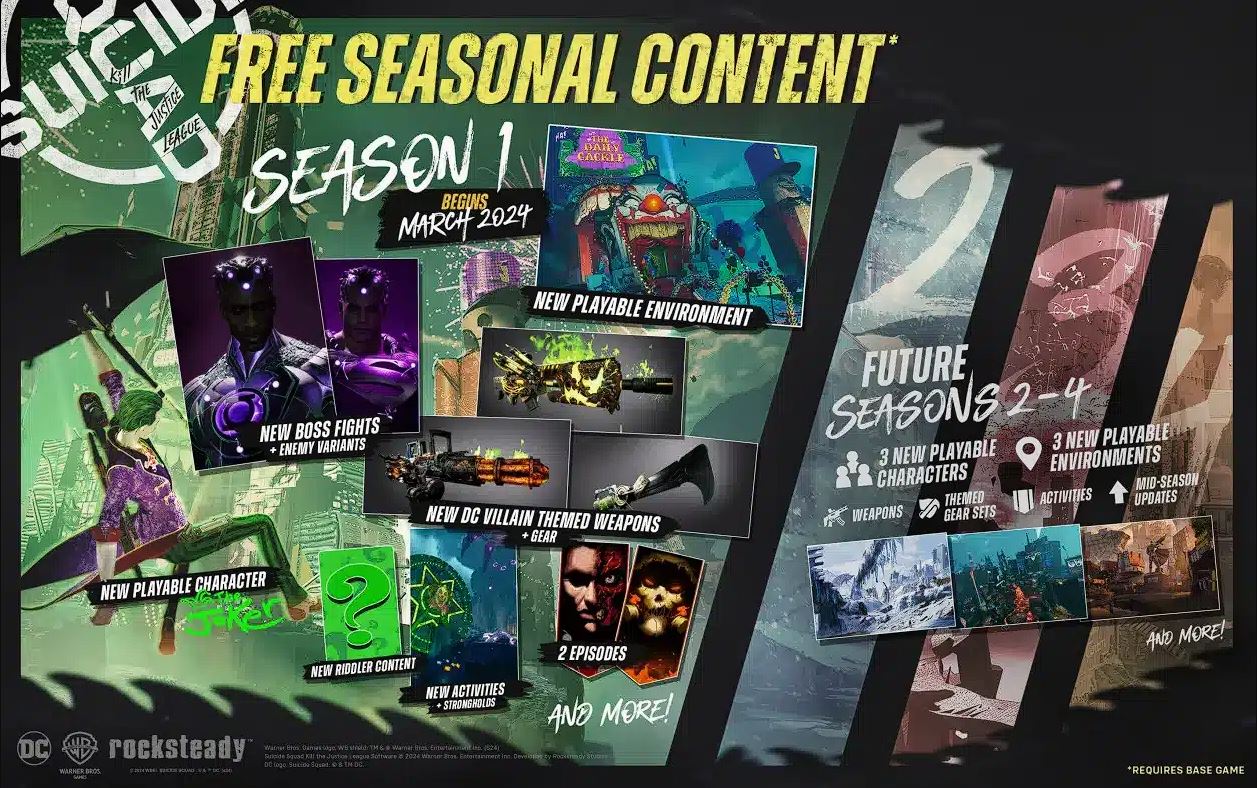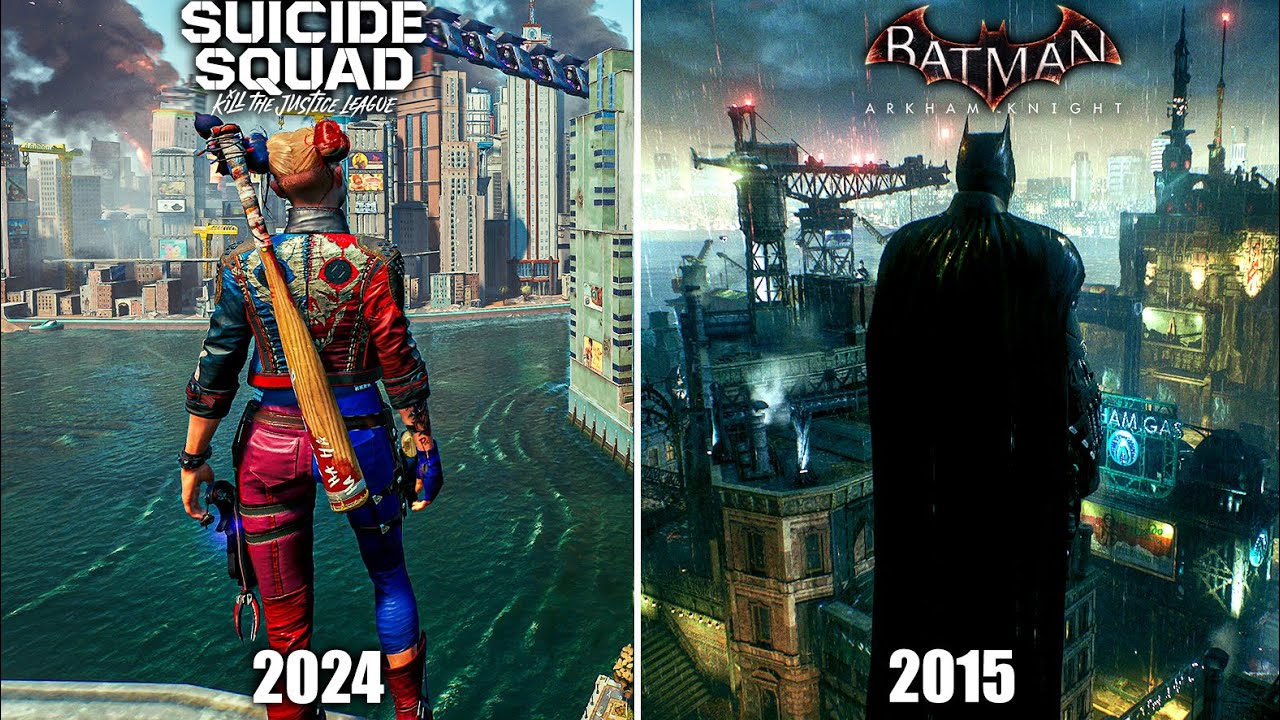Story Highlights
For a lot of fans of Rocksteady’s Batman games, Suicide Squad: Kill the Justice League was already raising red alarms from its very first preview. But it wasn’t until the full release that it became obvious that the title is truly a failure on multiple levels. In a lot of ways, Rocksteady spent the better part of a decade working on a title that was flawed from the ground up.
This resulted in the company being locked into a title that was destined for failure. Coupled with the controversial storyline, the generic looter-shooter gameplay, and the abysmal live-service model, the game truly stands as one of the biggest triple-A failures as of late. In fact, it’s so bad, that I think it needs to be a wake-up call for other developers on what not to do. Here’s why.
Live Service Can Lead To Dead-On-Arrival Titles
Increasingly, developers have been attempting to add live service elements to their recent titles. While it can work out in some cases, Suicide Squad: Kill the Justice League shows that this is an easy trap to fall into. Especially for developers, who lack prior experience in designing and maintaining a live service title. In this case, Rocksteady’s looter-shooter title fails to even make a half-decent first impression.
So the idea that players would come back and engage in the game’s downright repetitive endgame content is laughable at best. The main problem is that the core gameplay loop designed by Rocksteady simply doesn’t excite fans enough to keep playing. So it doesn’t matter what new additions the developers might add in the future. The foundation on which the game is based is simply the problem.

Suicide Squad: Kill the Justice League, for those who can stomach its terrible endgame, will involve you doing similar content on different parts of the map. The worst part is that the gunplay doesn’t feel nearly distinct enough to keep you engaged for a long period of time. So it doesn’t really matter if Rocksteady plans on keeping the game fresh with frequent updates. It’s already been canned for a lot of people.
While some parts of the game do offer replay value, like the different builds, and progression system, it’s pretty clear the live service elements for this game were tacked on at some point in development. In doing so, the game feels half-baked and wholly unengaging. It’s a shame because the title might have been decent at some point in development, but was crippled by Rocksteady’s insistence on making it a live service title.
Predatory Monetization Will Always Cause Failure
Monetization is an essential part of any game. The video game industry is a business like all others. But recently, it’s becoming more and more apparent, that monetization in games has reached an absurd level. You’ve got Diablo 4, charging as much as an entire game’s cost, just for cosmetics. Suicide Squad: Kill the Justice League follows a similar example.
Keep in mind, both of these titles were not free to play. So not only are players expected to spend the box price for the title. But then, they have to spend even more money on cosmetics and customization. Instead of simply having those unlocked through missions and progression in-game. While such a monetization model seems decent for free-to-play games, nowadays, it’s becoming the norm for just about every title.

Suicide Squad: Kill the Justice League goes a step further, charging players an embarrassing amount of money for its frankly, lackluster skins. Visually, the game feels like it’s a step behind Rocksteady’s prior games. Even though, those titles are almost a decade old. But visuals aside, the price of some of these skins is almost embarrassing for the players to have to see.
Take for example the skins you receive as a part of pre-ordering the Deluxe Edition. You’d think that Rocksteady would want to at least reward fans for opting for the more expensive version of the game by giving them decent-looking cosmetics. But as it turns out, you don’t even fully unlock the skins as a part of the deluxe edition. Instead, you only get the base versions, and have to purchase the additional color options separately.
This just screams greed. It goes to show that this title, more than anything, serves as a way to nickel and dime the player base, trying to get them to spend as much money on shoddy customizations as possible. If the core gameplay loop was even remotely satisfying, it’s possible players might feel more inclined to dabble in these overpriced skins. But as is, it’s just not even worth giving a second thought to.
Suicide Squad Could Hopefully Kill The Live Service Trend
It’s a shame to think about the potential other titles that Rocksteady could have worked on during the 10 years it took to make Suicide Squad: Kill the Justice League. With little in the way of redeeming qualities, it’s clear the title will fail to have a lasting impact on most gamers. I wouldn’t be surprised to see Rocksteady eventually dip out on their promise to introduce consistent updates to the game.
If nothing else, it would be good to see the title be what delivers the finishing blow to the recent hype around live service games. Gamers clearly don’t like a lot of these games. But that doesn’t mean you can’t make a good title with live service elements. But the only thing is that if you expect fans to dedicate hours upon hours to a game, it should at least work on a foundational level.

Suicide Squad: Kill The Justice League sadly didn’t do that. Hopefully, as with the MMO boom of previous years, and the MOBA boom after that, the live service title game also ends up dying out eventually. I’d be grateful for Rocksteady for ushering in its downfall at least.
Thanks! Do share your feedback with us. ⚡
How can we make this post better? Your help would be appreciated. ✍



